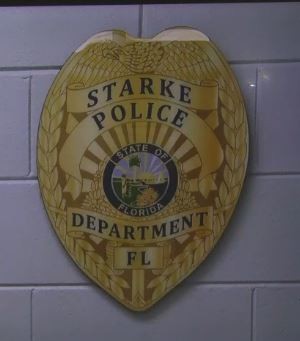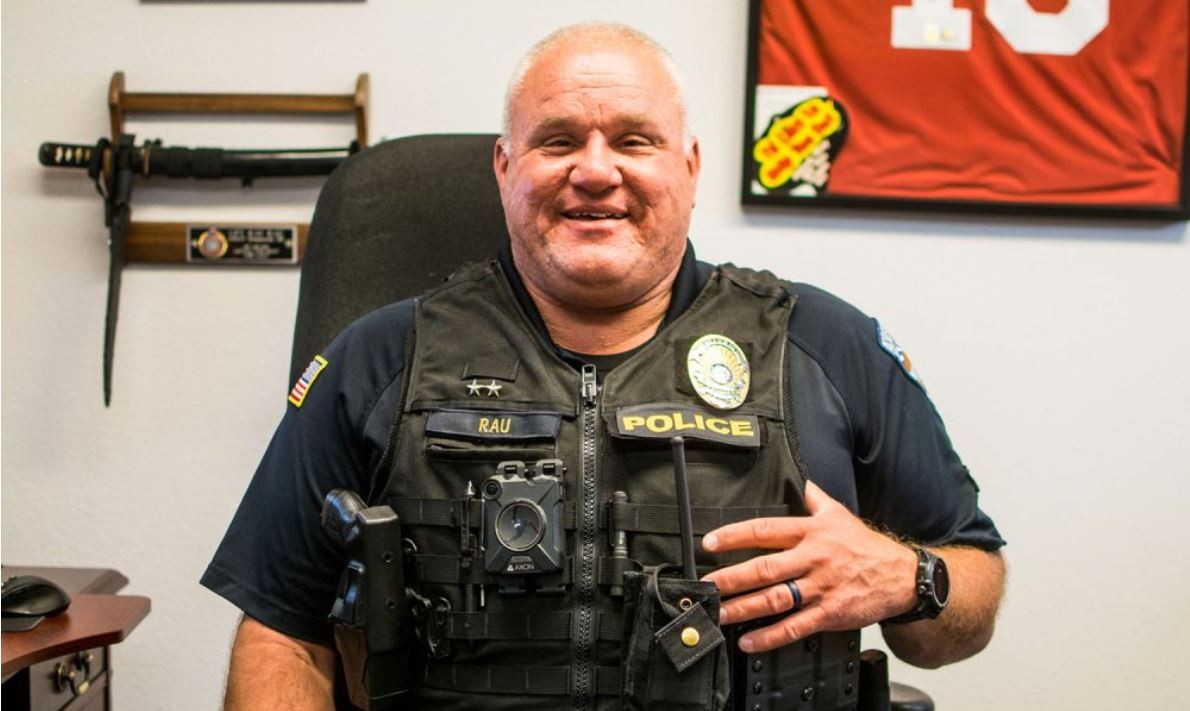Too much evidence?
Albuquerque Tribune (New Mexico), SECTION: EVENING; Pg. A1
BYLINE: Maggie Shepard / 823-3679
Albuquerque, NM
Inspectors to police: Weed inventory
After their introductory tour of the Albuquerque Police Department's evidence room, a pair of independent experts already have started a list of possible changes to the troubled operation.
At the top of the list: Stop storing so much stuff.
Professional evidence room inspectors Joseph Latta and Robert Giles arrived in Albuquerque on Monday to begin a weeklong consultation on procedures, philosophy and logistics at the Police Department's evidence storage warehouses.
The warehouses have been the subject of a yearlong attorney general's investigation into employee theft.
Recent employee allegations of mismanagement and negligence there led to the abrupt retirement of Police Chief Gilbert Gallegos.
Before he left, Gallegos requested Latta's $19,500 consultation.
Latta and Giles spent Tuesday touring the room and talking with employees. The two experts from Burbank, Calif., work for Evidence Control Systems Inc. Both are affiliated with the nonprofit International Association for Property and Evidence, a professional organization for evidence room technicians and property managers.
Latta has a background in grocery warehousing and more than 20 years in policing, a combination he says gives him insight and skill into this type of work.
Little suggestions came to mind first: Move shelves down to make more room for storage bins, and put bar codes at the top of envelopes instead of the bottom for ease of scanning into the operation's tracking database.
Longer-range projects emerged by the end of the day: Streamline the research process for discovering expired cases, add extra steps of paperwork to track evidence checked out of the room for trial, and simplify the code and filing system for evidence and storage bins.
But these changes are only part of the solution of the operation's No. 1 problem.
"If there is anything that concerns me, it's the size of the inventory," Latta said.
The evidence room holds baseball bats, beer cans and cigarette butts from 25 years ago, said Capt. Larry Sonntag, the officer in charge of the repository. About 1 million pieces of evidence are stored, more than the normal amount for a department the size of Albuquerque's, Latta said.
"Only about 1 percent of evidence is ever taken into court, but you don't know what that 1 percent is," Latta said.
That uncertainty has prompted Albuquerque and other police departments across the nation to keep everything they can for as long as they can, with evidence items kept in storage even after cases are completed or the defendant dies.
Sonntag, on the job since February, is overseeing a piece-by-piece inventory of the 1 million items with the goal of destroying every piece of unnecessary evidence.
But that distinction isn't black and white. District Attorney Kari Brandenburg has said she'd like to see every piece of evidence held forever but realizes that isn't possible.
Latta said examining the inventory at an average of 30 minutes per item will take years.
Sonntag expects 18 to 24 months for the inventory.
Some of the room's 11 civilian technicians and the 10 officers brought in temporarily to help with the inventory are researching each case and checking the statute of limitations on the crimes.
Latta and Giles will examine the written policy for deciding when evidence is to be destroyed or auctioned. The two have helped about 60 of the other departments they have consulted with this issue. They have toured about 300 evidence rooms.
Computer systems and Albuquerque has a good one, they said can be set to alert technicians when a case has exceeded its statute of limitations, Giles said.
Latta said the computer system isn't the only good thing Albuquerque's evidence room has going for it.
The building structure is intact, the staff is responsive and aware of security issues, video surveillance is extensive, and Sonntag and his staff want to make it a better place, Latta said.
"We've been working very hard," Sonntag said, to make changes and correct years of inefficient policies. He plans to finish the last four to six years of his career overseeing the room. Latta said having one person in charge of the room for that long will be a benefit.
As leader of the room, Sonntag has the authority to implement any other changes he chooses from Giles and Latta's final report.
Sonntag said moving shelves shouldn't be a problem and could be initiated immediately. But changes in how officers check out evidence to take to court could take longer to implement and require discussions with new Police Chief Ray Schultz, Brandenburg and judges.
Luckily for Sonntag, he says, those people and other criminal justice leaders are serving on Mayor Martin Chavez's Blue Ribbon Commission created last week to monitor progress at the room.
"There is a sense of invigoration, and (technicians) are as excited as anybody to be a part of having a systematic approach to re-establishing the integrity and credibility of the evidence room," Sonntag said.
GRAPHIC:
PHOTO BY:Rick Scibelli Jr./Special to The Tribune PHOTO: b/w Capt. Larry Sonntag (right) of the Albuquerque Police Department escorts Joseph Latta (left) and Robert Giles of Evidence Control Systems Inc. through the department's much-maligned evidence room in the North Valley. The two were examining the operation Tuesday after being hired as consultants to review policies and procedures. "We are here today to fix things, not surprise anyone," Giles said.
- - - - - - - - - - - - - - - - - - - - - - - - - - - - - - -
International Association for Property and Evidence
"Law Enforcement Serving the Needs of Law Enforcement"
www.IAPE.org
BYLINE: Maggie Shepard / 823-3679
Albuquerque, NM
Inspectors to police: Weed inventory
After their introductory tour of the Albuquerque Police Department's evidence room, a pair of independent experts already have started a list of possible changes to the troubled operation.
At the top of the list: Stop storing so much stuff.
Professional evidence room inspectors Joseph Latta and Robert Giles arrived in Albuquerque on Monday to begin a weeklong consultation on procedures, philosophy and logistics at the Police Department's evidence storage warehouses.
The warehouses have been the subject of a yearlong attorney general's investigation into employee theft.
Recent employee allegations of mismanagement and negligence there led to the abrupt retirement of Police Chief Gilbert Gallegos.
Before he left, Gallegos requested Latta's $19,500 consultation.
Latta and Giles spent Tuesday touring the room and talking with employees. The two experts from Burbank, Calif., work for Evidence Control Systems Inc. Both are affiliated with the nonprofit International Association for Property and Evidence, a professional organization for evidence room technicians and property managers.
Latta has a background in grocery warehousing and more than 20 years in policing, a combination he says gives him insight and skill into this type of work.
Little suggestions came to mind first: Move shelves down to make more room for storage bins, and put bar codes at the top of envelopes instead of the bottom for ease of scanning into the operation's tracking database.
Longer-range projects emerged by the end of the day: Streamline the research process for discovering expired cases, add extra steps of paperwork to track evidence checked out of the room for trial, and simplify the code and filing system for evidence and storage bins.
But these changes are only part of the solution of the operation's No. 1 problem.
"If there is anything that concerns me, it's the size of the inventory," Latta said.
The evidence room holds baseball bats, beer cans and cigarette butts from 25 years ago, said Capt. Larry Sonntag, the officer in charge of the repository. About 1 million pieces of evidence are stored, more than the normal amount for a department the size of Albuquerque's, Latta said.
"Only about 1 percent of evidence is ever taken into court, but you don't know what that 1 percent is," Latta said.
That uncertainty has prompted Albuquerque and other police departments across the nation to keep everything they can for as long as they can, with evidence items kept in storage even after cases are completed or the defendant dies.
Sonntag, on the job since February, is overseeing a piece-by-piece inventory of the 1 million items with the goal of destroying every piece of unnecessary evidence.
But that distinction isn't black and white. District Attorney Kari Brandenburg has said she'd like to see every piece of evidence held forever but realizes that isn't possible.
Latta said examining the inventory at an average of 30 minutes per item will take years.
Sonntag expects 18 to 24 months for the inventory.
Some of the room's 11 civilian technicians and the 10 officers brought in temporarily to help with the inventory are researching each case and checking the statute of limitations on the crimes.
Latta and Giles will examine the written policy for deciding when evidence is to be destroyed or auctioned. The two have helped about 60 of the other departments they have consulted with this issue. They have toured about 300 evidence rooms.
Computer systems and Albuquerque has a good one, they said can be set to alert technicians when a case has exceeded its statute of limitations, Giles said.
Latta said the computer system isn't the only good thing Albuquerque's evidence room has going for it.
The building structure is intact, the staff is responsive and aware of security issues, video surveillance is extensive, and Sonntag and his staff want to make it a better place, Latta said.
"We've been working very hard," Sonntag said, to make changes and correct years of inefficient policies. He plans to finish the last four to six years of his career overseeing the room. Latta said having one person in charge of the room for that long will be a benefit.
As leader of the room, Sonntag has the authority to implement any other changes he chooses from Giles and Latta's final report.
Sonntag said moving shelves shouldn't be a problem and could be initiated immediately. But changes in how officers check out evidence to take to court could take longer to implement and require discussions with new Police Chief Ray Schultz, Brandenburg and judges.
Luckily for Sonntag, he says, those people and other criminal justice leaders are serving on Mayor Martin Chavez's Blue Ribbon Commission created last week to monitor progress at the room.
"There is a sense of invigoration, and (technicians) are as excited as anybody to be a part of having a systematic approach to re-establishing the integrity and credibility of the evidence room," Sonntag said.
GRAPHIC:
PHOTO BY:Rick Scibelli Jr./Special to The Tribune PHOTO: b/w Capt. Larry Sonntag (right) of the Albuquerque Police Department escorts Joseph Latta (left) and Robert Giles of Evidence Control Systems Inc. through the department's much-maligned evidence room in the North Valley. The two were examining the operation Tuesday after being hired as consultants to review policies and procedures. "We are here today to fix things, not surprise anyone," Giles said.
- - - - - - - - - - - - - - - - - - - - - - - - - - - - - - -
International Association for Property and Evidence
"Law Enforcement Serving the Needs of Law Enforcement"
www.IAPE.org


